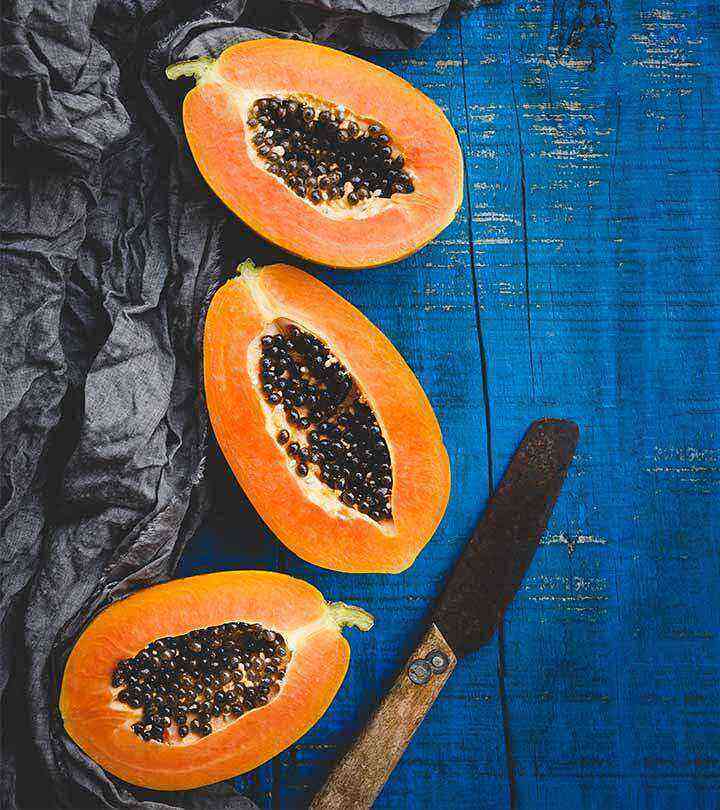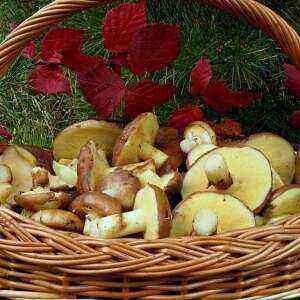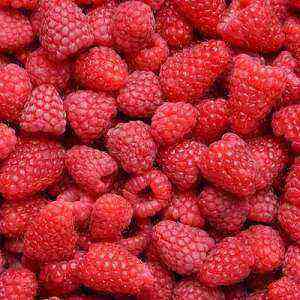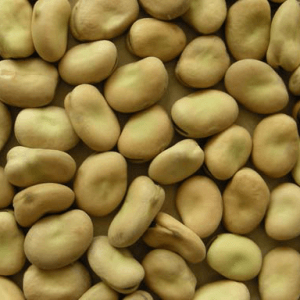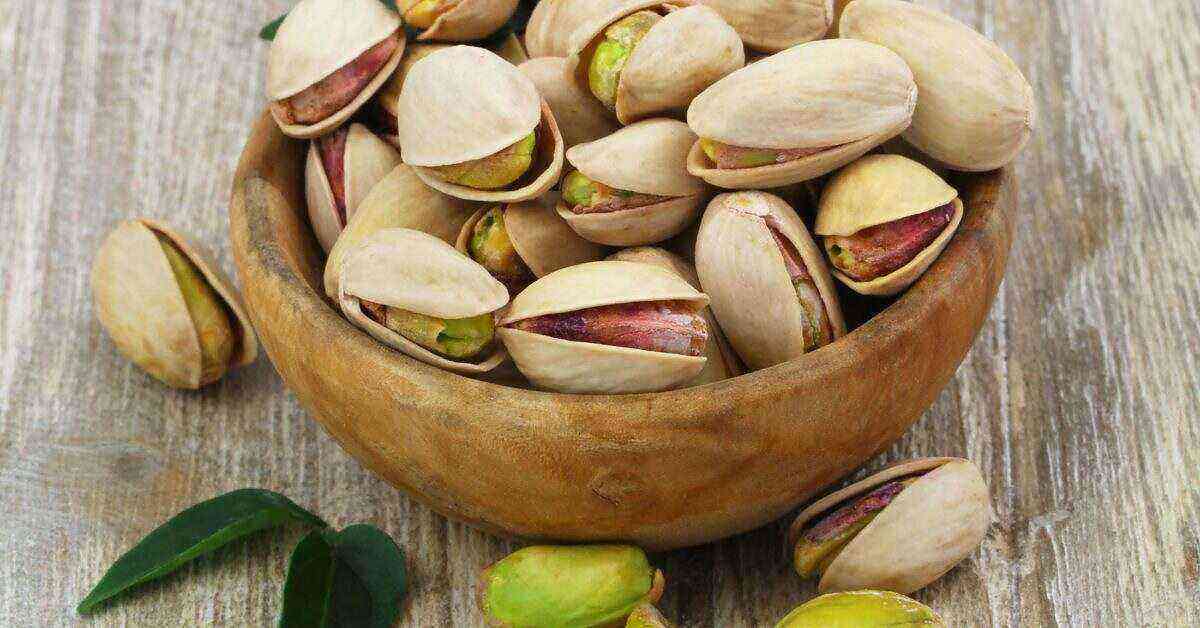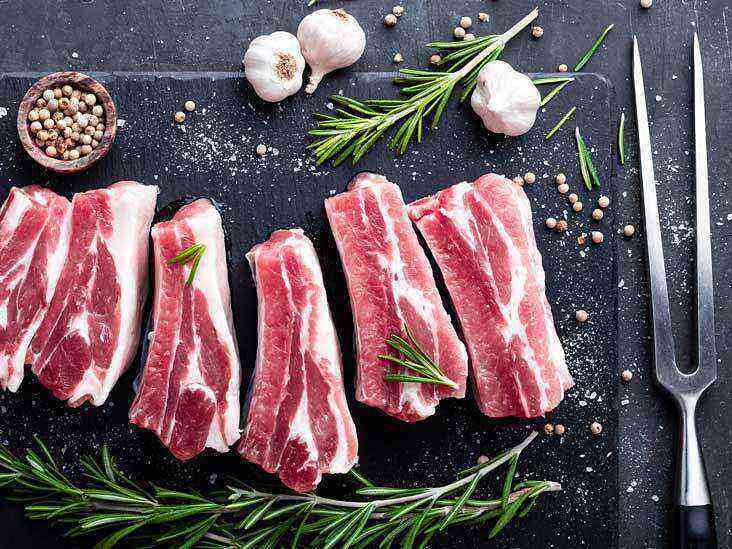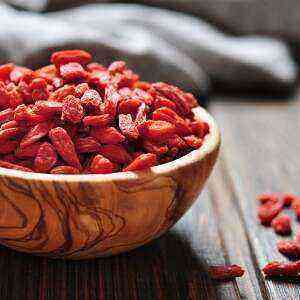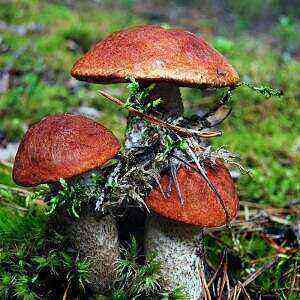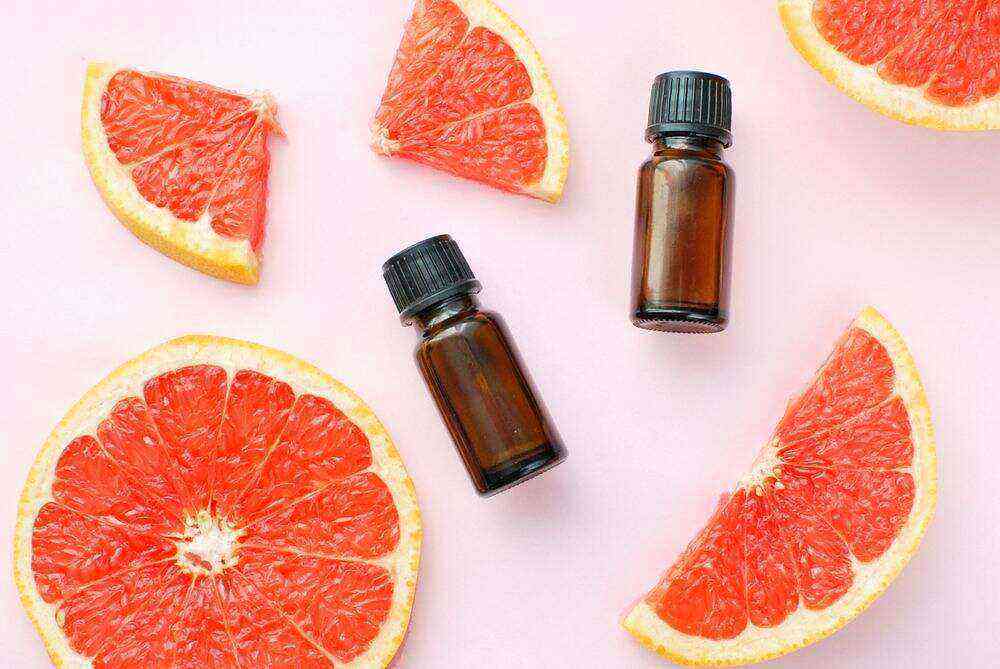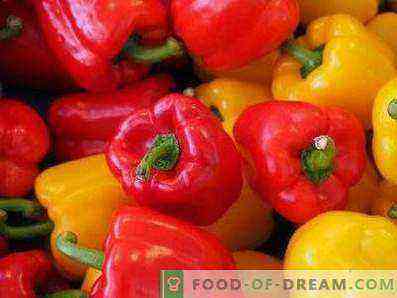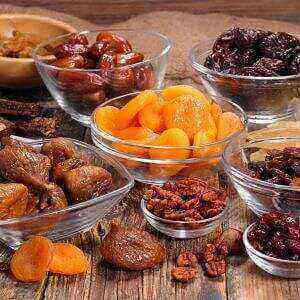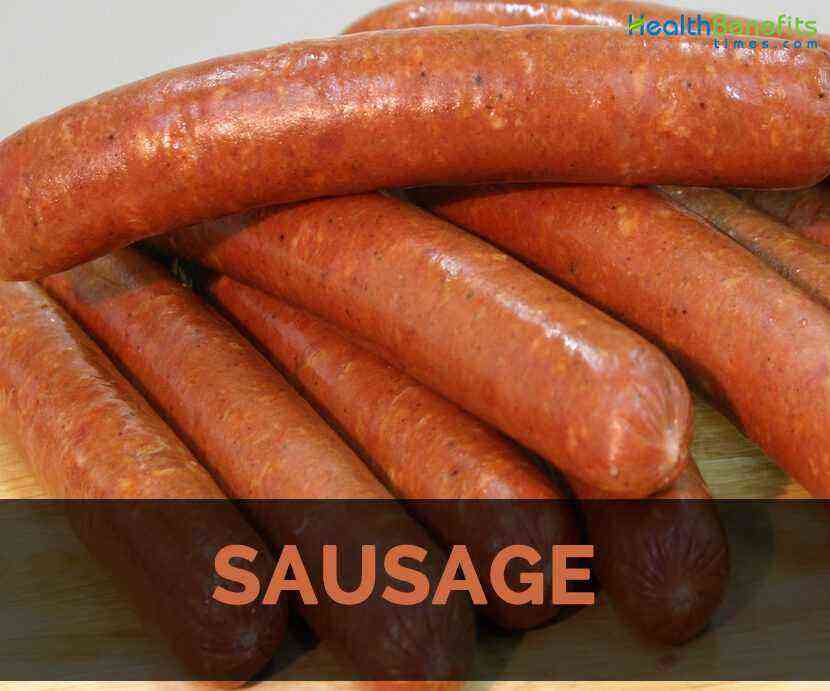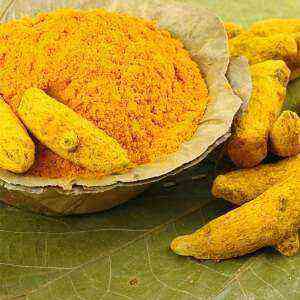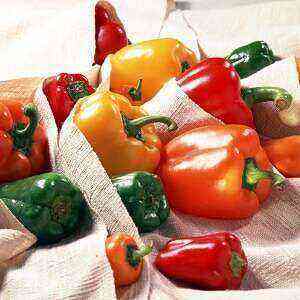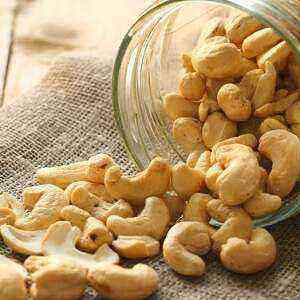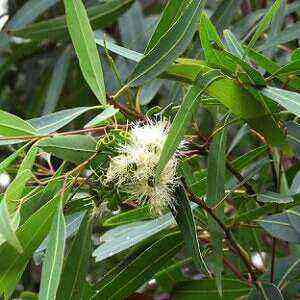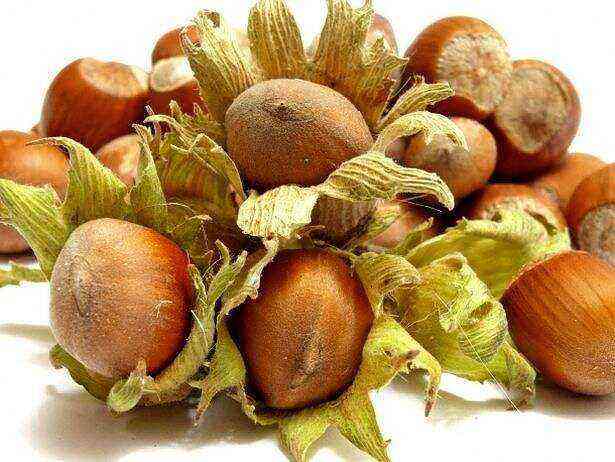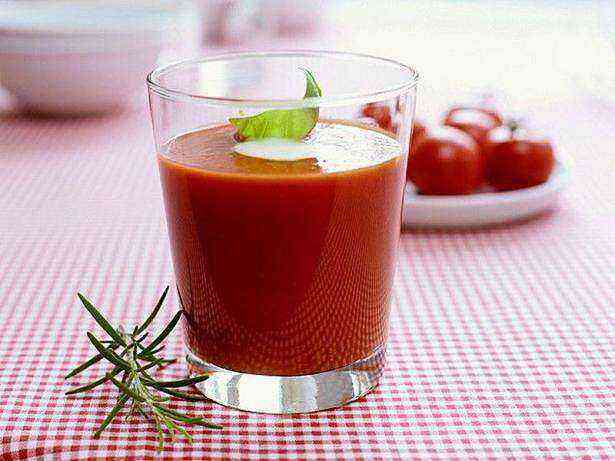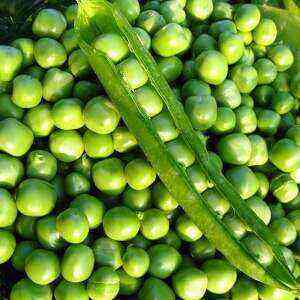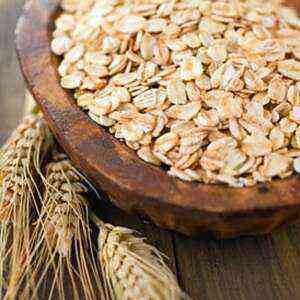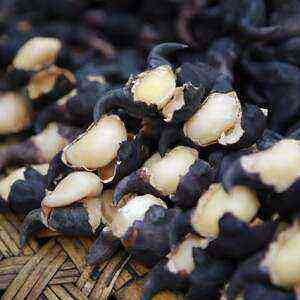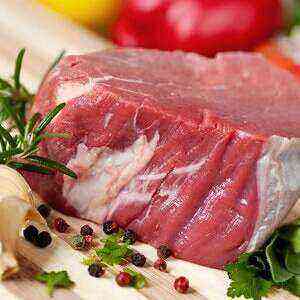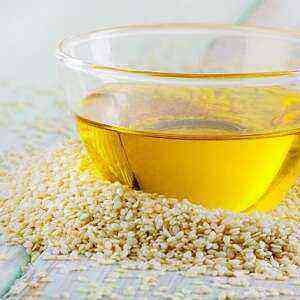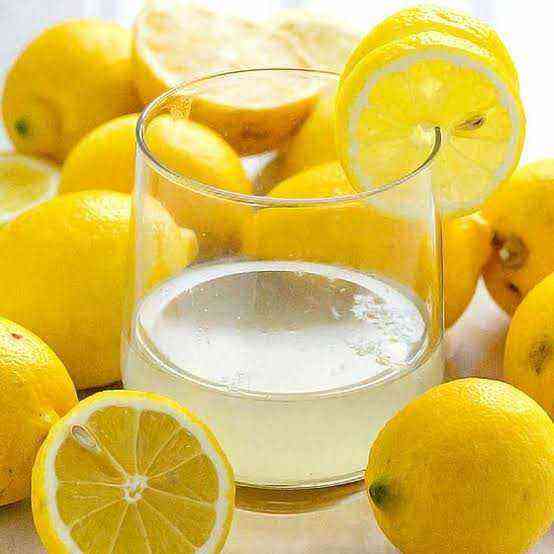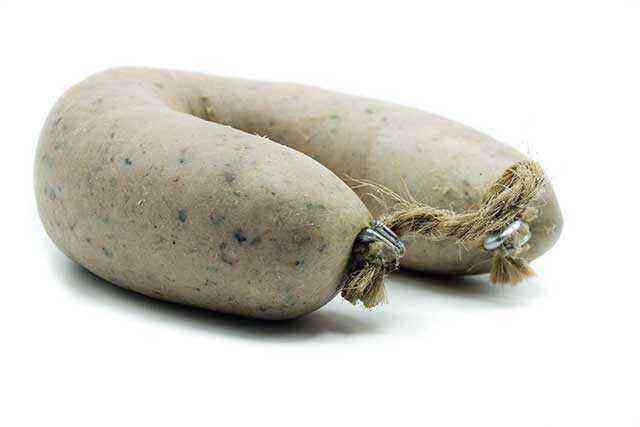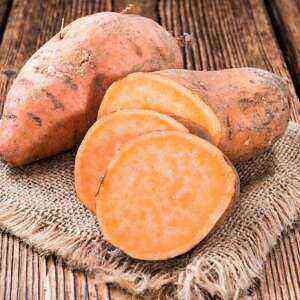
Product History
Growing sweet potatoes dates back to the time of the Aztecs. Ancestors called the Kamotli vegetable, they ate it raw, boiled and fried.
The territorial homeland of sweet potato is South America (the modern territory of Colombia and Peru). Some scholars dispute such claims and propose their own versions. According to them, the origin of culture began in the tropical climatic zone of Brazil or Mexico.
Batat conquered America and began to travel around the world (Christopher Columbus performed a similar feat). Mentions of the vegetable are found in Polynesia, the West Indies, New Zealand, on Easter Island. The rapid spread to so distant continents still cares about the great minds of our time and remains an open question. Scientists decided to go by the method on the contrary: the tubers did not exactly spread along the ocean currents. Salt water actually kills the vegetable and makes the tubers unsuitable for consumption.
The Spaniards brought potato to Europe, after which the culture went to the Mediterranean, and then to Asian countries.
The UN Food and Agriculture Organization provides such data on the current distribution of vegetable crops.
Manufacturer country
Amount of vegetables (in millions tons) grown in 1 year
Китай
81,7
Уганда
2,8
Нигерия
2,8
Индонезия
2,0
Танзания
1,4
Вьетнам
1,3
Индия
1,1
США
1,0
Varieties
More than 7 varieties of sweet potato have been bred. Below are the most common varieties that are grown in the temperate climatic zone.
Purple
Country of origin USA Flesh color dark purple Ripening period medium Taste with a tart chestnut hint Method of planting seedlings The structure of the flesh is dense, reminiscent of potatoes Beneficial substances anthocyanins (strengthens the walls of capillaries, has a decongestant and disinfectant effect)
Japanese
Country of origin USA Flesh color light cream Ripening period medium Starchy taste, most similar to potato Method of planting seedlings The structure of the pulp is dense, reminiscent of potatoes
Tynung T-65
Country of origin Taiwan Flesh color light pink Ripening period medium Sweet taste, with a hint of carrot Seedling method Flesh structure creamy, pliable The peculiarity of the variety forms long thin loops with burgundy stem, yellow flesh and pink tubers
O`Henry
Country of origin USA Flesh color light cream, yellow Ripening period average Pumpkin flavor Planting method Seedling structure dry flesh with veins Feature of the variety The variety is resistant to diseases and has a high yield
White
Country of origin Russia Color of pulp white Ripening period average Potato flavor Method of planting seedlings Crumbly pulp Feature of the variety “White” is as close as possible to an elite variety of potatoes; ripens quickly, while maintaining a high yield percentage
Useful Properties
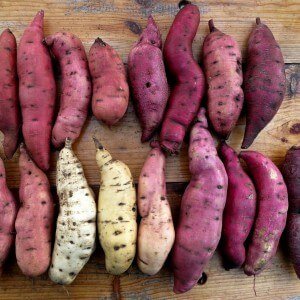
Beta-carotene is responsible for the health of the organs of vision. A person needs to constantly maintain the level of beta-carotene in order not only to see perfectly, but also to look stunning. Vitamin A acts as an antioxidant that stimulates collagen production. Collagen, in turn, is responsible for the health, youth, elasticity and radiance of our skin. Eating sweet potato is a tasty and inexpensive way to prolong youth.
Vitamin A is fat soluble. If you want to get the most benefit, then use sweet potato with vegetable oil. Vitamin is absorbed faster and better by the body, providing radiance and healthy skin.
The vegetable contains an impressive amount of vitamin C. Doctors recommend replacing traditional potatoes with sweet potato to cover almost 40% of the daily vitamin intake.
The fiber included in the composition is responsible for the digestibility of the products and the digestive system. It cleanses the body of toxins and toxins, speeds up metabolism and helps the gastrointestinal tract to cope with its functions faster. Fiber, in fact, facilitates the work of the digestive tract, gives us a long-lasting feeling of fullness and helps to lose weight.
Another important element of the composition is potassium. It is indispensable for stress, depression, insomnia. Potassium stabilizes the nervous system and helps to “restart” the brain. A person will feel harmony, calmness and clarity of mind.
The root crop has an anti-inflammatory effect and disinfects the body from the inside. Sweet potato is able to minimize the harmful effects of heavy metals and free radicals. The vegetable not only fights against their pathogenic manifestations, but also partially removes it from the body.
Sweet Potato Facts
1 fact
Dr. Thomas Muffet wrote The Health Improvement, in which he pointed out one interesting property of sweet potato. He claimed that a vegetable boosts libido.
Modern scholars have confirmed the words of Muffet. Sweet potato not only improves sexual desire, but also minimizes the pathogenic manifestations of menopause. The use of sweet potato can smooth the transition to a menopause, improve the mood and physical health of a woman.
2 fact
The use of vegetable tubers is a space for multifaceted culinary imagination. From them you can make flour, sugar, alcohol or molasses. Sweet potato is a non-waste product. The leaves and seeds of the root crop can also be put into action. Leaves need to be soaked to get rid of the bitter aftertaste, and then added to salads.
3 fact
A variety of vegetable varieties determines its taste. The root vegetable can have the taste of banana, nut, melon, zucchini, chestnut and pumpkin. Such a variety of taste palette makes sweet potato one of the most functional vegetables used in cooking.
4 fact
Sweet potato is spread all over the world, but in different parts of the world they prefer special varieties and methods of cooking vegetables. Americans prefer juicy orange fruits with a dense pulp that needs to be boiled. Among Asians, purple fruits are popular with pulp, which in texture resembles cream, and a dense smooth surface. In Asia, they prefer to bake sweet potato with spices and a favorite side dish.
5 fact
Sweet potato is a more resistant root crop compared to potatoes. No toxic substances are formed in the sprouted vegetables. In addition, sweet potato has “immunity” to fungal diseases, which potatoes do not have.
Chemical composition
Digestible carbohydrates (in grams per 100 grams of product)
Starch and dextrins 7,3 Mono- and disaccharides (sugar) 6
Use in cooking
Each grade of sweet potato has a unique special taste. Unsweetened varieties are very similar to potatoes, but have a sweetish tinge, which is felt in the aftertaste. In sweet varieties, distinct walnut-caramel or carrot notes are noticeable.

- bake;
- boil;
- make mashed potatoes;
- fry in slices;
- boil in the skin;
- eat raw;
- make chips in the oven;
- bake in the microwave;
- make soup;
- make soufflé, jam, pastille or jam;
- prepare potato pancakes and other “potato” dishes.
Sweet potato is a non-waste product, since you can use both tubers and vegetable leaves. They need to be soaked to remove impurities and unnecessary juice, and then boiled or cut raw into a salad.
Fact: flowering sweet potato varieties produce seeds that can be used as a substitute for coffee.
The culinary application of sweet potatoes varies by region. In Japan, whole vegetable tubers are baked, adding spices and herbs. In China, they prefer to cook sweet potato soups. Such vegetable soups are a traditional winter delicacy of the people. In Uganda, they like to dry a vegetable and make a drink from it that tastes like tea. Koreans adapted to create vegetable noodles from oblong root crops, and Europeans like to dilute boring vegetable salads with a sweet, nutty note.
Recipe for Pickled Vegetables with Soy Sauce and Chili

- eggplant – 1 pc;
- sweet potato – 1 pc;
- vegetable oil – 1,5 tablespoons;
- zucchini – 1 pcs;
- fresh mushrooms (it is recommended to take mushrooms) – 5 pcs;
- fresh green onions to taste;
- corn (canned or peeled fresh) – 3 tablespoons;
- soy sauce – 2 tablespoons;
- Garlic – 3 cloves;
- red chili pepper – 1 pc;
- noodles – 300 g;
- vegetable broth – 1 l.
Preparation
Take a deep grill pan and heat it (a slightly noticeable haze should appear). Cut vegetables into small cubes, grease with vegetable oil and send to a preheated pan. Fry vegetables until cooked for about 2-4 minutes on each side, stirring occasionally.
The sequence of frying vegetables:
- eggplant;
- sweet potato;
- mushrooms;
- zucchini;
- corn;
- green onion feathers.
Transfer the prepared vegetables to a large container, add the sauce, garlic, chili pepper (pre-chopped) and your favorite spices. Mix the ingredients thoroughly, cover with cling film and let cool for 20-30 minutes. Boil the noodles to a semi-moist state (al dente) and prepare the serving plates. Bring the chicken stock to a boil, send the noodles there and cook until cooked. Serve the noodles in portions with a vegetable side dish.
Противопоказания

- a duodenal ulcer;
- diverticulosis;
- diverticulitis;
- ulcerative colitis;
- spastic ulcer;
- pregnancy and lactation;
- individual intolerance to the product and substances that make up the vegetable;
- pathologies of the kidneys;
- urinary tract diseases.
Acquaintance with a new product should be as thorough and safe as possible. Learn how to cook the vegetable and try to combine it with previously known foods. If, after eating, there is a rash, nausea / vomiting and other manifestations, then the reason will be obvious – an innovative food product. If the body reacted badly to food delicacy, stop eating sweet potatoes. If the condition does not return to normal, consult a doctor.
Storage Rules
The optimum temperature for sweet potatoes is 16 ° C, the permissible humidity is from 50 to 90%. If the temperature is below the designated temperature, the tubers will quickly rot and become unusable. Temperatures above 16 ° C will also harm the vegetable – it will begin to germinate. Unlike potatoes, pathogenic toxic substances are not formed in sprouted sweet potatoes, so some of the whole fresh vegetables can still be eaten.
Important: make sure that there are no mice or other pests in the root storage area.
It is recommended to store sweet potatoes in wooden or plastic crates / containers. Root crops can be wrapped in paper, sprinkled with dry sand, straw or sawdust to increase shelf life.
